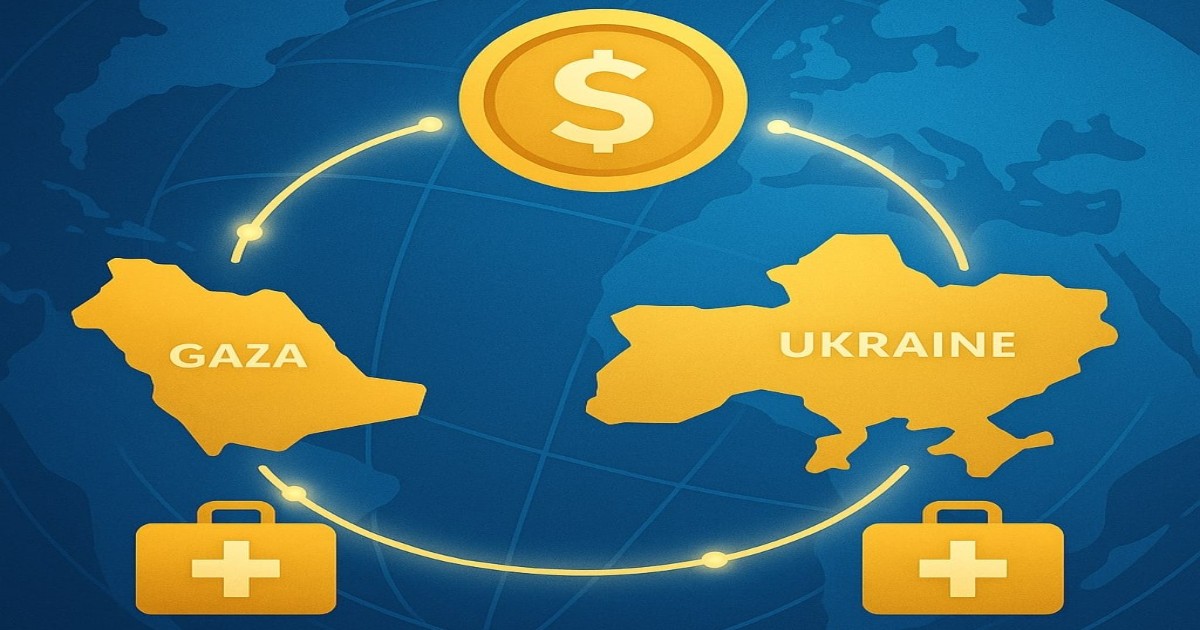Stablecoin Aid Lifeline: DeFi Moves Emergency Cash to Gaza & Ukraine When Bank Rails Go Dark
Khushi V Rangdhol Jul 11, 2025 04:24
In Gaza and Ukraine, stablecoins and blockchain are vital for aid delivery, offering rapid, traceable assistance amid banking disruptions and wartime challenges.

When the Banking Rails Break
Gaza’s two-million residents have endured months-long aid blockades; in January the Cash Working Group said 200,000 households would need emergency cash the moment a cease-fire held. In Ukraine, conventional donor pipelines shrank after U.S. foreign-aid funds were frozen in January, leaving NGOs scrambling for alternative channels.
Into that vacuum has stepped a patchwork of stablecoins, e-wallets and permissioned blockchains—technologies once dismissed as speculative but now proving to be the only rails that move money when banks or corridors are shut.
Gaza: Digital Cash Under Bombardment
The most granular experiment to date is a March 2025 pilot by Dutch NGO ZOA, which loaded 1,000 Israeli-shekel equivalents onto PalPay “Mahfazati” e-wallets for 14 displaced families in four southern camps. Recipients confirmed near-instant receipt and used the balance mainly for food and medicine, although cash-out fees spiked to 25 per cent amid Gaza’s liquidity crunch.
Policy wonks are watching a bigger idea: an on-chain, shekel-backed stablecoin that could route humanitarian payments around Gaza’s fragmented banking system. The Atlantic Council sketched the concept last year, arguing that digital tokens “could be a building block to the future of payments in Gaza.” For now it is stuck in legal purgatory—Israel worries about terror finance, while aid groups fear volatility—but the blueprint sits ready if regulators blink.
Grass-roots workarounds are already live. Islamic charities advertise “Crypto Zakat” to bypass blocked SWIFT wires, pitching USDT or ETH donations as faster and harder to intercept. Mainstream NGOs have followed: Save the Children and WFP USA both accept more than 40 cryptocurrencies through The Giving Block, which says stablecoins now account for 44 per cent of all crypto gifts.
But Gaza’s digital turn is hardly smooth. UNICEF warns that new, heavily securitised aid hubs risk shifting blame rather than solving delivery bottlenecks. Meanwhile Israeli regulators point to Tron-based militant finance as proof they must scrutinise every wallet. The upshot: small-scale pilots thrive, but a territory-wide stablecoin rail remains politically radioactive.
Ukraine: A Template that Already Scales
By contrast, wartime Ukraine has become a live laboratory for blockchain aid at scale.
- UNHCR’s Stellar-based cash intervention: Beginning December 2022, the UN refugee agency started delivering USD Coin (USDC) directly to Vibrant wallets held by internally displaced people. Recipients withdraw at 4,500 MoneyGram outlets or keep funds in-app for cross-border travel.
- Stellar Aid Assist with the International Rescue Committee (IRC): Over three months in 2024-25, IRC disbursed $228 each to 278 Ukrainians; 100 per cent reported “smooth” delivery and could cash out in minutes.
Speed is the headline number—transactions settle in seconds—but transparency matters more. Aid agencies can trace USDC end-to-end, satisfying auditors even as bank-donor reporting falters.
Why DeFi rails beat cash and cards
- Borderless portability – fleeing families carry a phone, not a briefcase of hryvnia or shekels.
- Programmable compliance – whitelist wallets, spend-limits and geo-fences deter diversion without armies of accountants.
- Cost – settling hundreds of micropayments costs pennies on Stellar; international bank wires can top $30 each.
The friction points
- Off-ramp fees: Gaza’s PalPay test showed 20-25 per cent withdrawal costs when cash is scarce.
- Regulatory chill: Headlines linking crypto to Hamas fundraising have slowed charity uptake, even when forensics firms find little evidence.
- Device gaps: Roughly 20 per cent of Gaza’s internally displaced lack smartphones, forcing paper-voucher work-arounds.
What’s Next
Bottom Line
The wars in Gaza and Ukraine have forced an uncomfortable truth: when missiles cut fiber lines and sanctions freeze bank pipes, humanitarian money needs a Plan B. DeFi-style rails—whether a fully public stablecoin or a permissioned wallet—are no silver bullet; they still wrestle with fees, phone gaps and political mistrust. But on the only metric that counts in crisis—did the right person get value quickly?—the early scorecard favours code over cash caravans.
As cease-fires stutter and donor fatigue grows, that advantage may decide whether vulnerable families receive medicine in hours or not at all. And the longer the guns stay loud, the more likely it is that tomorrow’s aid worker will carry a seed phrase along with the first-aid kit.
Image source: Shutterstock
.jpg)
